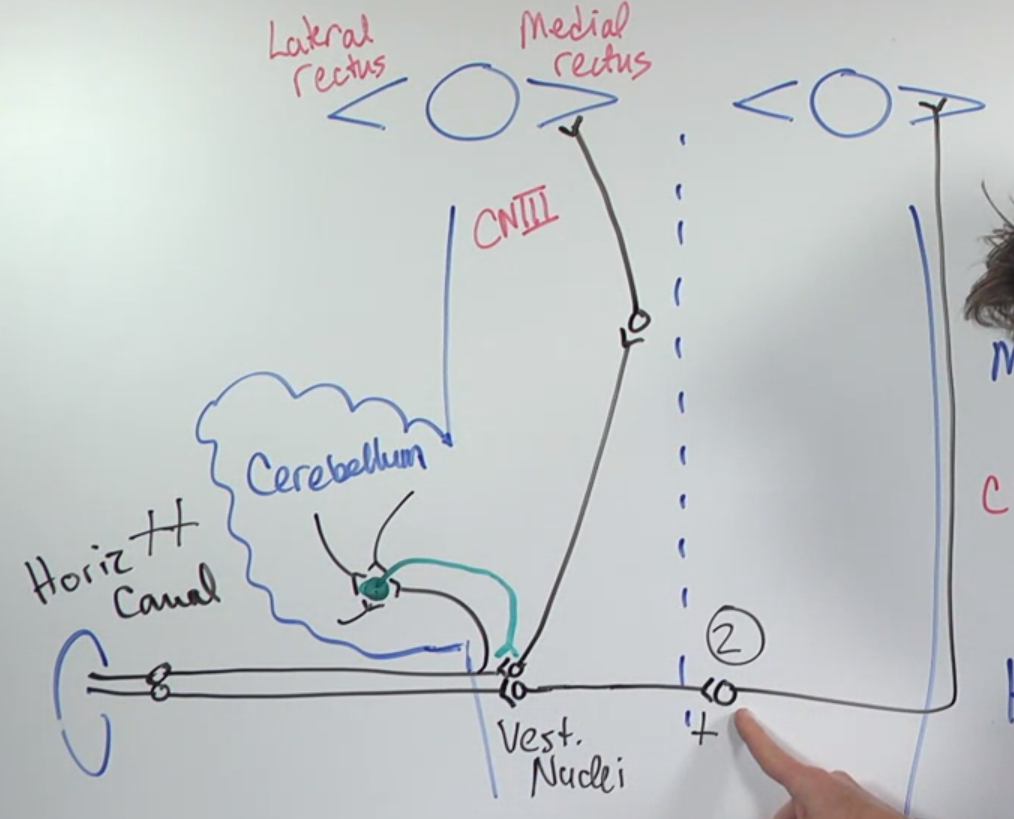VOR Gain: Not Set in Stone
We learned that VOR (vestibulo-ocular reflex) is a reflex, but reflexes can be surprisingly adaptable! Let’s explore how VOR gain (effectiveness) changes under different circumstances.
The Experiment: Near vs. Far Focus
- The instructor demonstrates VOR modulation by focusing on a faraway and then a nearby target while shaking their head.
- Eye movements are significantly larger when focusing on a near object.
Understanding Gain
- VOR gain refers to the ratio of eye movement to head movement.
- A higher gain indicates more significant eye movement to compensate for head motion.
- For near objects, where small head movements translate to larger visual shifts, a higher gain is necessary to maintain steady gaze.
Gain Modulation: Automatic and Necessary
- We don’t consciously adjust VOR gain; it happens automatically.
- This modulation is crucial because a constant high gain would be disruptive during activities like reading while moving the head.
The Flocculus: The Gain Controller
- The flocculus, a part of the cerebellum, plays a vital role in VOR gain modulation.
- It receives direct input from the ear and sends signals to the vestibular nuclei, adjusting the VOR response before it reaches the motor neurons controlling eye movement.

Cerebellum on Display
- The instructor points out the location of the flocculus on the underside of the cerebellum.

Next Up: Gaze Control
- The lecture will explore how we can voluntarily control our gaze, which might involve even suppressing the VOR.